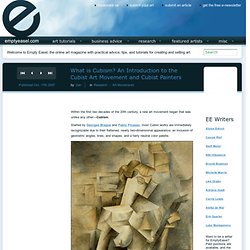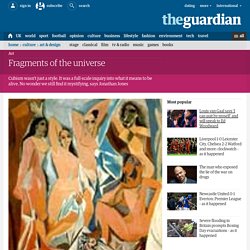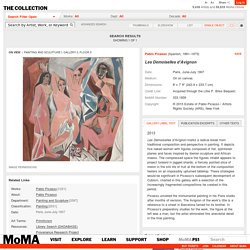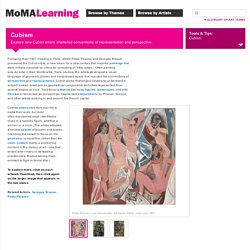

Luxury villas for rent in Spain holiday luxury villa. Cubism. Cubism. What is Cubism? An Introduction to the Cubist Art Movement and Cubist Painters. Within the first two decades of the 20th century, a new art movement began that was unlike any other—Cubism.

Started by Georges Braque and Pablo Picasso, most Cubist works are immediately recognizable due to their flattened, nearly two-dimensional appearance; an inclusion of geometric angles, lines, and shapes; and a fairly neutral color palette. As the movement evolved, color, texture, and graphic elements (like text) were added, to the point where later Cubist works often appeared more like collage than anything else. But Cubism wasn’t just a specific “style” or “look”—it actually allowed artists an entirely different way of seeing and depicting real-life objects. What is Cubism? Unlike traditional still-lifes, landscapes, or portrait paintings, Cubist paintings aren’t meant to be realistic or life-like in any way. This type of Cubism is called Analytic Cubism, and it’s usually what comes to mind when people think of Cubist artwork.
Famous Cubist Artists. How cubist paintings are the greatest of the 20th century. The paintings are brown and grey, with spaces of white canvas turned cream with time.

They are almost 100 years old. In the museum, you tend to pass them by. There are so many modern movements that are easier to enjoy than cubism. In the next room, those crazy Italian futurists offer a more spectacular, understandable theatre of time and space. The Dadaist Duchamp's bicycle wheel conveys the enigma of the universe. We tend to see ourselves as more sophisticated than our great-grandparents. But modern art in its later manifestations is no longer unpopular; most of us can enjoy or at least be provoked by it. Art today is made from the building blocks of ordinary life. Paradoxically, cubism is difficult not because it is abstract but because it is descriptive.
Most modern painting is stylish. Cubism was never a style in that sense. Picasso and Einstein, Miller has shown, were both influenced by the French thinker Henri Poincaré, who published his book La Science et l'Hypothèse in 1902. Pablo Picasso. Les Demoiselles d'Avignon. Paris, June-July 1907. Publication Excerpt: The Museum of Modern Art, MoMA Highlights, New York: The Museum of Modern Art, revised 2004, originally published 1999, p. 64 Les Demoiselles d'Avignon is one of the most important works in the genesis of modern art.

The painting depicts five naked prostitutes in a brothel; two of them push aside curtains around the space where the other women strike seductive and erotic poses—but their figures are composed of flat, splintered planes rather than rounded volumes, their eyes are lopsided or staring or asymmetrical, and the two women at the right have threatening masks for heads. The space, too, which should recede, comes forward in jagged shards, like broken glass. In the still life at the bottom, a piece of melon slices the air like a scythe. The faces of the figures at the right are influenced by African masks, which Picasso assumed had functioned as magical protectors against dangerous spirits: this work, he said later, was his "first exorcism painting.
" Cubism. Cubism. Following their 1907 meeting in Paris, artists Pablo Picasso and Georges Braque pioneered the Cubist , a new vision for a new century that inspired that were initially ridiculed by critics for consisting of “little cubes.”

Often painting side-by-side in their Montmartre, Paris, studios, the artists developed a visual language of geometric planes and compressed space that rejected the conventions of and . Cubist works challenged viewers to understand a subject broken down into its geometrical components and often represented from several angles at once. Traditional like nude, landscapes, and were reinvented as increasingly fragmented by Picasso, Braque, and other artists working in and around the French capital. Pablo Picasso. Les Demoiselles d'Avignon. Georges Braque. Pablo Picasso. Cubists from real life to make their work, but most often maintained small identifiable clues to a realistic figure, whether a woman or a violin. 1.
The visual or narrative focus of a work of art.